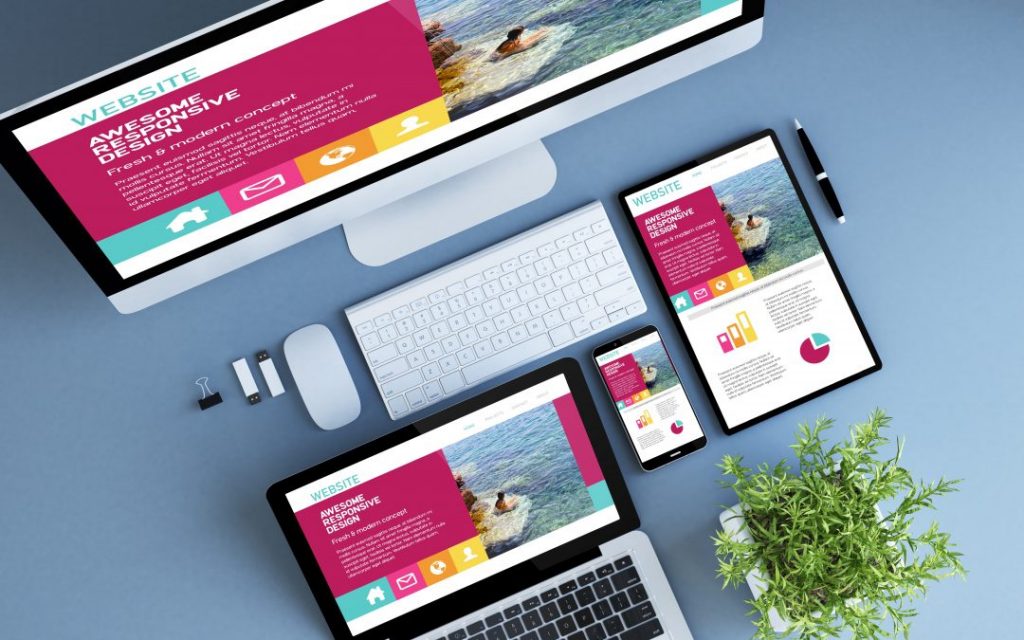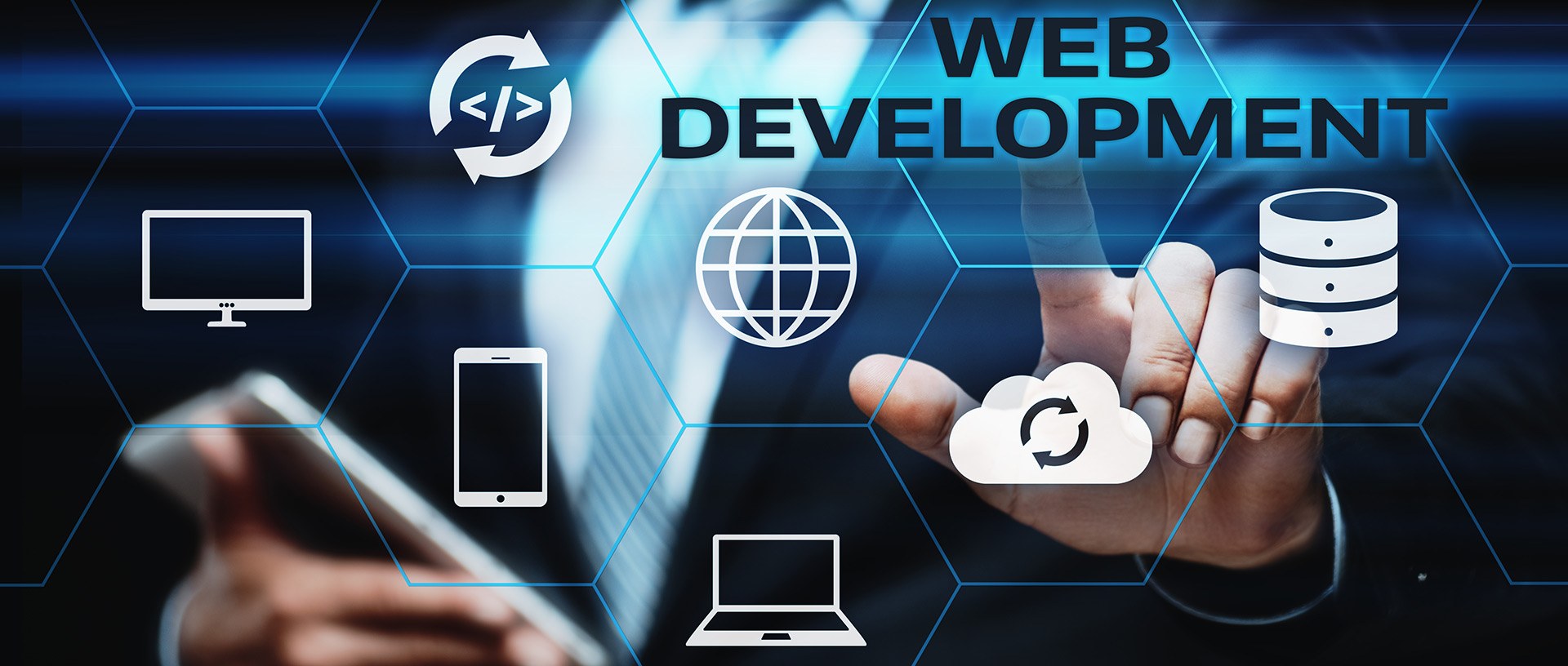Branding and web development techniques that align with user needs
Checking Out the Various Sorts Of Website Design and Their Unique Benefits
The landscape of Web style includes a variety of designs, each offering distinctive benefits that satisfy different individual demands. Flat and minimalist designs emphasize clarity, while responsive and material layouts enhance versatility throughout devices. Typography-driven and illustratory strategies intend to improve interaction and emotional resonance. Understanding these diverse types can considerably impact customer experience and brand name understanding. What lies under the surface area of these style choices?
Minimal Website Design

Minimal website design frequently integrates a restricted color combination and uncomplicated typography, which not only improves looks but also strengthens brand identity. The minimized intricacy can bring about much faster packing times, better enhancing individual complete satisfaction. In addition, by lessening aesthetic mess, users can involve with web content better, causing enhanced understanding and retention. In general, minimalist Web style fosters a seamless user experience, making it a popular option for brands aiming to convey quality and expertise in their on-line visibility.
Responsive Website Design
Receptive website design has come to be necessary in today's electronic landscape, ensuring mobile compatibility for customers throughout various tools. This approach substantially boosts individual experience by providing seamless navigation and availability, despite display dimension. As more people access the Web on tablet computers and smartphones, the value of responsive style remains to grow.

Mobile Compatibility Relevance
As smart phone use proceeds to rise, making certain web sites work with various screen sizes has ended up being vital for reliable interaction and engagement. Mobile compatibility, typically accomplished through responsive Web design, enables websites to adjust perfectly to mobile phones, tablets, and other gadgets. This versatility not only gets to a wider audience however likewise boosts brand name integrity. A web site that works well on smart phones mirrors expertise and interest to customer needs. In addition, online search engine prioritize mobile-friendly websites in their rankings, making compatibility a vital factor for online visibility. By buying mobile compatibility, companies can boost their electronic existence and cater to the expanding variety of customers that access info on the move. Therefore, focusing on mobile-responsive style is essential in today's electronic landscape.
Improved User Experience

Flat Design
Level layout is a minimal approach to website design that emphasizes simpleness and quality. By removing three-dimensional components such as appearances, slopes, and darkness, flat layout develops an aesthetically attractive interface that prioritizes web content and capability. This design advertises an instinctive navigation experience, as individuals can rapidly recognize vital attributes and actions without diversion.
One of the key benefits of level layout is its responsiveness across different devices and display sizes. Its clean lines and straightforward designs adjust effortlessly, ensuring a consistent experience for users on mobile, tablet, or desktop systems. Additionally, level style commonly incorporates vibrant colors and typography, enhancing aesthetic effect and brand acknowledgment.
The simplicity fundamental in flat design leads to quicker loading times, which adds favorably to user contentment. Generally, flat design stays a preferred option for modern Web advancement, lining up with contemporary aesthetic preferences while delivering superb functionality
Material Style
Material Style represents a design language developed by Google that concentrates on creating a intuitive and natural customer experience across electronic platforms. This method highlights the use of grid-based formats, responsive computer animations, and depth effects such as lighting and darkness, which assist to develop a feeling of hierarchy and spatial relationships. By simulating the physical globe, Material Style allows users to engage with electronic interfaces in a more interesting and all-natural way.
One of the essential benefits of Material Style is its flexibility throughout various devices and display dimensions, making sure a constant experience for users. Additionally, it advertises a clear visual language that boosts functionality, making it simpler for customers to navigate intricate applications. The consolidation of vibrant colors and strong typography additionally plays an essential function in attracting attention to essential aspects, therefore boosting overall individual involvement - website design. Consequently, Product Style has actually come to be a popular option among developers seeking to develop aesthetically appealing and practical websites
Typography-Driven Style
Typography-Driven Design concentrates on the calculated use of kind to boost the visual and useful facets of a website. This style strategy prioritizes typefaces, font sizes, spacing, and pecking order to produce visual rate of interest and guide user experience. By very carefully choosing typography, developers can share brand identification and stimulate feelings, making the material more obtainable and interesting.
Efficient typography enhances readability and usability, making sure that customers can quickly soak up and navigate the website info. The right mix of type can additionally establish a clear visual pecking order, allowing individuals to swiftly recognize essential messages and contacts us to activity.
A typography-driven technique can be adapted to different gadgets, making certain uniformity throughout platforms. This flexibility is vital in today's multi-device landscape, where individual experience is paramount. Eventually, Typography-Driven Design offers not just as an artistic selection but likewise as a functional aspect that significantly affects an internet site's effectiveness.
Illustrative Web Layout
Illustrative website design uses aesthetic storytelling strategies that can significantly enhance individual involvement. By incorporating distinct illustrations, internet sites can produce a memorable brand identification that resonates with their audience. This strategy not just astounds visitors yet additionally connects messages in an aesthetically engaging manner.
Aesthetic Narration Strategies
A plethora of Web designers utilize aesthetic narration strategies to develop engaging and immersive customer experiences. This approach combines layout, images, and typography to Go Here narrate a story that resonates with customers on an emotional degree. By integrating compelling visuals, developers can effectively communicate messages and stimulate feelings, leading site visitors through a brand name's journey. Infographics, computer animations, and interactive elements offer to boost stories, making complicated information a lot more unforgettable and accessible. Additionally, aesthetic storytelling can establish a natural brand identification, as constant imagery and motifs reinforce core values and messages. Ultimately, this strategy not only mesmerizes users however also fosters a deeper connection with the web content, urging exploration and retention. Via experienced application, aesthetic narration changes basic Web experiences into vibrant and purposeful interactions.
Enhancing Individual Involvement
Reliable website design significantly enhances user engagement by leveraging illustratory elements that draw focus and foster interaction. Pictures can simplify complicated concepts, making them a lot more remarkable and approachable for users. They damage the uniformity of text-heavy web pages, producing visual breaks that welcome expedition. Furthermore, distinct illustrations can stimulate emotions, encouraging customers to link with the material on a deeper level. Interactive elements, such as animations or hover results, can likewise boost engagement by welcoming customers to get involved actively rather than passively consuming details. This method not only maintains site visitors on the site longer however also enhances the likelihood of return gos to. Inevitably, efficient illustrative website design transforms the individual experience, making it a lot more impactful and pleasurable.
Branding Via Illustration
Visual aspects play a significant duty fit a brand name's identification, and illustrations are a powerful tool in this respect. Illustrative website design permits brands to convey their one-of-a-kind individuality and worths through personalized art work. This strategy fosters a much deeper emotional connection with the target market, improving memorability and interaction. By incorporating illustrations, brand names can differentiate themselves in a jampacked market, developing a distinct visual story that reverberates with their target market. Additionally, images can make and streamline complex principles material much more obtainable, effectively connecting messages in an interesting way. In general, branding through picture not just enriches the customer experience but likewise strengthens brand recognition, making it a beneficial technique for businesses intending to develop a strong on-line presence.
Regularly Asked Inquiries
Exactly how Do I Select the Right Web Design Kind for My Company?
To select the appropriate website design kind for an organization, one must assess goals, target market, and sector standards. Assessing user experience and performance will certainly lead the option process for excellent interaction and performance.
What Tools Are Finest for Developing Various Web Style Designs?
Popular devices for producing varied website design styles consist of Adobe XD, Figma, Lay Out, and WordPress. Each offers special attributes tailored to different design demands, making it possible for developers to build functional and visually enticing websites successfully.
Just How Much Does Specialist Web Design Usually Cost?
Professional Web layout commonly sets you back between $2,000 and $10,000, depending on complexity, attributes, and developer expertise. Custom solutions and recurring maintenance may raise costs, while themes can use more economical choices for less complex projects.
Can I Incorporate Several Website Design Types Efficiently?
Yes, combining numerous Web design kinds can be effective. By incorporating components from numerous styles, developers can develop special, appealing user experiences that cater to varied audiences while boosting functionality and aesthetic allure.
How Do Design Fads Effect Customer Experience and Engagement?
Style patterns greatly influence individual experience and interaction by enhancing aesthetic allure, improving navigating, and cultivating psychological links - website development. Remaining updated with trends allows developers to create intuitive user interfaces that reverberate with customers and urge long term interactions
Flat and minimal over at this website styles emphasize clarity, while responsive and material layouts enhance flexibility throughout tools. It might appear counterproductive, minimalist Web design stresses simpleness to boost individual experience. Receptive Web style plays an essential duty in boosting user experience by making certain that a web site adjusts effortlessly to different display dimensions and devices. Flat design is a read what he said minimalist method to Web design that emphasizes simplicity and clarity. Material Layout stands for a design language created by Google that focuses on creating a natural and user-friendly individual experience across electronic platforms.